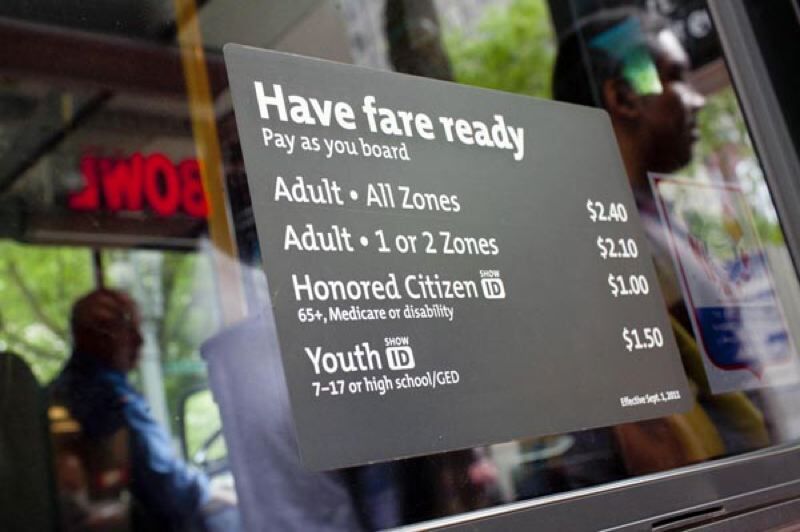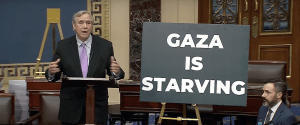Critics turn up heat on TriMet budget
Published 12:00 am Thursday, July 5, 2012

- TriMet riders need to get ready for fare, zone and service changes, and maybe even more to come.
Complaints are pouring in about TriMet’s new budget.
Trending
Advocates for riders are criticizing fare increases and service reductions. Downtown residents are unhappy about the end of free MAX rides. And Portland Mayor Sam Adams has accused TriMet of breaking a promise to provide free rides to public school students.
The complaints follow TriMet’s decisions to close a $12 million gap in the budget that took effect Sunday. But TriMet officials say things could get worse — much worse — in the future.
“We need a massive change of astronomical proportions in our finances for things to get better,” says Randy Stedman, TriMet’s executive director of labor relations and human resources.
Trending
Bruce Hansen, new president of the union that represents most TriMet employees, is not convinced, however. Hansen says he has not yet seen any documents that prove the financial picture is that bleak.
“My understanding is we’ve repeatedly asked for proof and haven’t seen it,” says Hansen, who became president of Amalgamated Transit Union Local 757 on July 1.
The issue could come to a head in a just a few weeks, however. That’s when TriMet’s board might be confronted with another $5 million shortfall in the budget it just approved. Stedman says the shortfall will occur if TriMet loses its current contract dispute with ATU 757. An arbitrator with the state Employment Relations Board is expected to issue a ruling by July 31.
According to Stedman, if the arbitrator favors the union, the full $17 million in service cuts and fare increases could continue for years. In fact, even more service cuts and fare increases could be required in future budgets if ATU 757 does not agree to reduce the health and other benefits its members now receive.
Stedman calls the benefit package “unsustainable.” Hansen disagrees, saying the benefits are well-deserved and not out of line with industry standards.
Negotiations on the next contract could begin in November.
Student pass fight
A state labor arbitrator is reviewing two contract proposals. The one from TriMet officials would cut benefit payments by $13.6 million during the next three years. The one from the union would cut benefits by only $1.5 million during the same time.
How TriMet closes the potential new $5 million budget gap is already in dispute. One rider advocacy group, OPAL Environmental Justice Oregon, says TriMet’s board has promised to take the money out of its $20 million contingency fund.
“That’s the reason they gave for keeping the $5 million in the contingency fund, in case the union wins the arbitration,” says Jonathan Ostar, OPAL’s executive director.
Stedman says that is a misunderstanding. He insists that contingency funds can only be spent on one-time shortfalls, not ongoing expenses.
Instead, TriMet officials say they would first discuss proposed service cuts that were not included in the previous round of budget reductions. Cuts were proposed but not enacted for 18 bus lines throughout TriMet’s service region. A reduction in frequency of MAX trains was also proposed but rejected.
If TriMet must come up with another $5 million, the board could start with these cuts and reductions.
The shortfall could be even larger if Adams forces TriMet to include the Youth Fare Pass program in its budget. The $2 million in lost TriMet revenue has previously been covered by Portland Public Schools and state Business Energy Tax Credits. But state lawmakers did not renew the tax credits last session.
Adams insists that TriMet General Manager Neil McFarlane agreed TriMet would pay for the program in exchange for the city not opposing the end of the Free Rail Zone downtown and in the Lloyd District. McFarlane and Board President Bruce Warner say the agency cannot pay for the program without cutting service elsewhere.
In retaliation, Adams has proposed increasing the fee Portland charges TriMet for its shelters to raise $2 million for the program — which would still leave TriMet with a $2 million loss.
Adams agreed last week to postpone the vote until July 25 to see if a compromise can be found.
Political crosshairs
Ironically, despite the problems, the transit agency has money to expand some TriMet services. For example, the agency is only paying a small fraction of the $1.49 billion Portland-to-Milwaukie light-rail project — $47.4 million for 20 years. The project is even paying $9.5 million to remodel the agency’s administration offices to accommodate the project’s construction.
In addition, the 2003 Oregon Legislature authorized TriMet to increase its payroll and self-employment tax by one-tenth of 1 percent for 10 years specifically to pay for new service.
The situation has helped push TrIMet’s rail service into the political crosshairs. OPAL Environmental Justice Oregon says TriMet should reduce the $3 million it gives to support the Portland Streetcar. And activists in Clackamas County are taking to the ballot to keep the new light-rail project out of their county. They say the county does not have the $25 million it promised for the project, and TriMet cannot afford to operate the extension that is already well under construction.
TriMet officials have repeatedly argued that MAX trains cost far less to operate than buses on a per-rider basis. Also, state laws that created TriMet do not require it to favor bus service over rail service.







